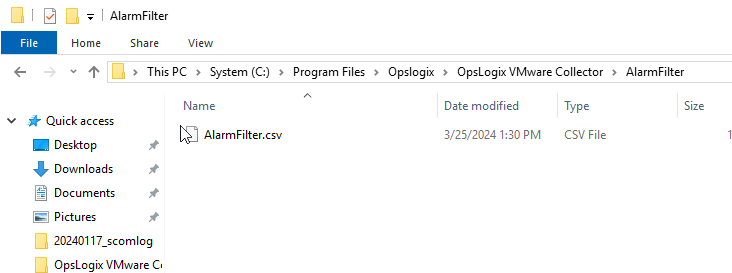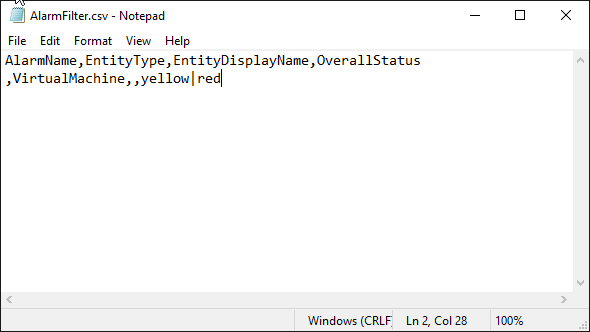Filtering vCenter Alarms with the VMware Management Pack
By default, the VMware Management Pack translates and parses all vCenter alarms to the SCOM alert format. This article shows you how to avoid parsing certain alarms from vCenter into SCOM.
Step 1: Accessing the Alarm Filter File
Navigate to the C:\Program Files\Opslogix\OpsLogix Collector\AlarmFilter\AlarmFilter.csv file on your server. You can open it with any text editor, but using Excel might offer a more user-friendly experience.

Step 2: Configuring Your Filters
Here’s where the customization begins. Add a new row to the CSV file for each alert filter you wish to set up. These filters work by matching alerts against the criteria you define in four key columns:
- AlarmName: The visible name of the alarm in vCenter.
- EntityType: The category of the entity triggering the alarm, such as
VirtualMachine,HostSystem, etc. - EntityDisplayName: The specific name of the entity, like
HostABCorWindowsServerPROD10. - OverallStatus: The alert status (e.g.,
yellow,red). You can use regular expressions to match multiple statuses.
Note: You can use regular expressions for matching rules. For instance, to exclude alerts with either yellow or red statuses, use the pattern (yellow|red).

Step 3: Copy the filter file to all the collectors
Make sure that the AlarmFilter.csv file is present in the C:\Program Files\Opslogix\OpsLogix Collector\AlarmFilter\ location on all servers which run the "Opslogix VMware Collector Service".
Step 4: Restart the collectors
For the changes to take effect, you need to restart the "Opslogix VMware Collector Service" on all servers.